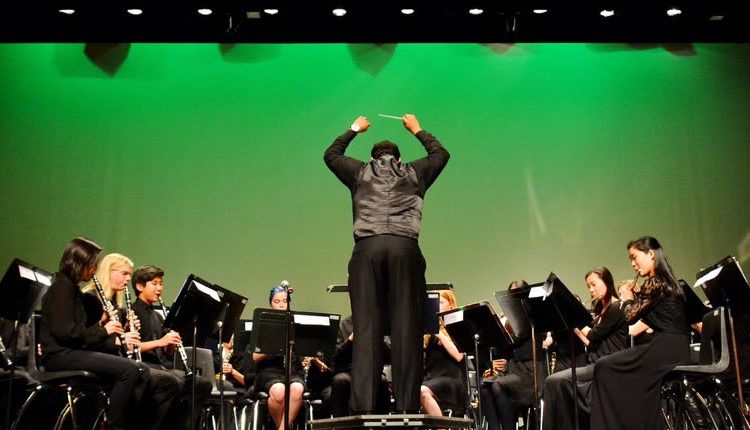Director’s Checklist Part Two
by E.C. Moore
More classic tips to improve the performance of your band
A truly great band is a combination of many factors, but the most important may be the personality and musicianship of the director. It is his or her duty to organize, teach, lead and inspire. What follows is a continuation of the checklist that began in our July 2005 online issue. Read through the list, and ask yourself these questions. The answers may prove helpful to directors seeking to improve their bands’ performance.
Do you teach good posture?
Breath is the soul of tone — as well as its support. Correct posture and good breathing habits go hand in hand. Insist upon good standing and sitting posture, for these are basic to good breathing and breath control.
Do you insist on good instrument position?
Instruments are designed to be held in a certain way. When they are not held in this standard position, tone quality, intonation and technique are adversely affected. Insist on good posture and correct position of the instrument in the hands, and of the hands on the instrument. Correct finger position is a basic requirement for rapid, comfortable technique.
Do you watch embouchure formations?
Watch the facial and embouchure formations of your students. When a malfunction becomes apparent, correct it at once. Proper facial and lip control is essential to correct playing.
Do you teach students to listen?
All great wind instrument teachers agree that a beautiful tone is the first requisite of an artistic performance. A beautiful tone is the result of mental alertness and concentration. Never allow students to play “a blur of notes.” Insist that they listen intelligently, critically and constructively, first to themselves and then to the band as a whole.
Do you teach the mechanical and acoustical resources of each instrument?
Many difficult passages are made easy when students understand the full mechanical and acoustical resources of their instruments. Be sure to teach the use of all legitimate alternate fingerings and slide positions.
Do you insist on proper attacks and releases?
The correct use of breath and tongue is basic to a good technique. Students should not only be taught the basic styles of attack and release, but the director must insist that they be used according to the demands made by the music.
Do you require a uniform and precise articulation?
There are about twelve basic articulations, and every member of the band must understand each of them. The effect of a light staccato can be ruined if one player uses the legato attack and release. Teach the basic patterns, and insist upon precise articulation.
Is your band well trained in basic rhythmic patterns?
There are twelve basic rhythmic patterns that composers use over and over again. When these are played carelessly, both harmonic and rhythmic distortion result. Teach your band a scientific, definitive method for counting and beating time. Then, as each student plays consistently on the right beat, basic rhythmic patterns will be precisely articulated.
Does your band play afterbeats clearly, precisely and in tune?
The playing of afterbeats is a neglected phase of ensemble performance. Ensemble tone can be seriously distorted when bass players puff their cheeks and “scoop” into every note. Inside parts are often similarly played as players gasp for breath between each note. Afterbeat accompanying passages should be played phrase-wise, with the players breathing only at phrase cadences. The tonguing should be light and clean.
Are inner voice parts heard clearly?
The proper balancing of ensemble tone is essential if the principal voices, inner parts and bass line are to be proportioned correctly. This requires that students listen carefully “across the band” and observe faithfully the conductor’s dynamic indications.
Does your band produce a good fortissimo sonority?
A good band plays fortissimo without overblowing or allowing the sonority to get out of control. A fine conductor once said that a band should “never play louder than lovely.”
…and a pianissimo?
Even when a band plays softly, its tone must be projected with intensity and resonance. There is a sharp distinction between an intense, lovely pianissimo and a weak, timid tone. Pianissimos should have real carrying power, even at “whisper” levels of sound.
Does your band read fluently and accurately?
When students read music well, they get real enjoyment and satisfaction out of playing together. Training in reading music should begin as soon as possible.
Do you teach theory?
Teaching students the basic principles of music theory helps them to read music better. Some knowledge of basic theory dispels much of the mystery surrounding note reading.
Do you teach proper phrasing?
Phrasing, or “punctuation,” is important in making music intelligible and giving it life and meaning. It is important to design correct breathing patterns for wind instrument players, and to teach them to breathe at the right time and place in the music.
E. C. Moore, a prominent music educator, was author of The Band Book, first published by Leblanc Educational Publications in the 1960s and still in print today. This article is a revised excerpt from that publication. Read part one. Part three will appear in a future Keynotes online update


